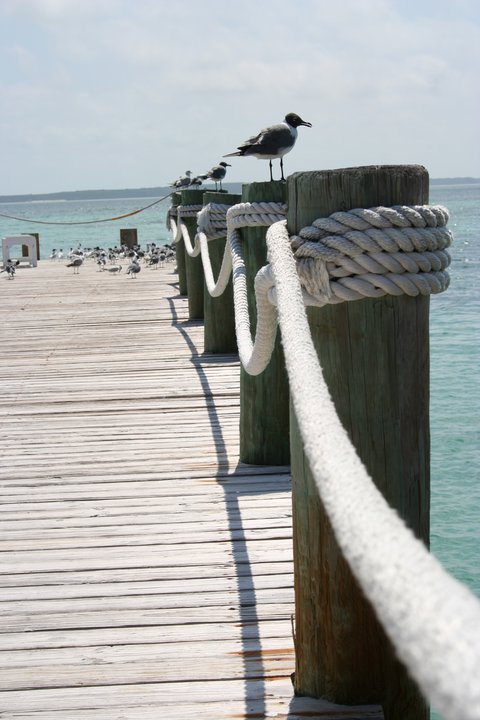Tips How To Make Your Vacation Photos Suck Less!
Guest Blogger Alert:
Adam gives some great tips on how to get kick a** vacation photos. This isn't your normal boring, stand there & smile article. it's funny. read it. love it. like it. share it baby.
Follow Adam on Twitter! @dudeimbibes
Come Sail Away, Come Sail Away, Come Sail Away with Me
By: Adam Lowe
Photos provided by: Adam Lowe
 I had the pleasure of cruising with Royal Caribbean just a couple of weeks ago. We visited CocoCay, Bahamas; St. Thomas; and St. Maarten. The weather was stunning, constantly in the 80’s, and only one rainy day. I’m adding these details simply because I want to make you jealous of my swanky vacation.
I had the pleasure of cruising with Royal Caribbean just a couple of weeks ago. We visited CocoCay, Bahamas; St. Thomas; and St. Maarten. The weather was stunning, constantly in the 80’s, and only one rainy day. I’m adding these details simply because I want to make you jealous of my swanky vacation.
On this cruise, my family promoted me to “official vacation photographer” – which I believe is code for “we don’t want to hassle with bringing our cameras, so we’re letting you handle it.” Let’s lay to rest those myths about what makes up vacation photography.
Remember those days when your aunt and uncle would come to your house, and pull out the slide projector, or the 75 pound photo album, and discuss, in excruciating detail, all the intricacies of their trip?
“Oh and this here, this was a piece of asphalt that had cracked off the road we were driving on. Isn’t it fascinating?” Precisely nine hours later, your bladder was about to explode and you felt more dispirited than if someone had put your favorite teddy bear down the garbage disposal.
So let’s get issue one out of the way – you don’t work for National Geographic (well, unless you do. In which case, welcome to Brooke Photography’s blog!). When you are appointed the “official vacation photographer”, it’s not up to you to chronicle every single waking moment of the trip – you’re out to capture emotions, the essence of the trip, and the big conversation-worthy highlights.
Here are some easy tips, from me to you, on how to assure your vacation photos don’t suck.
Know the Basics
 If you’re a photographer, you can likely just skip over this section. Unless you’re a crappy photographer, then this works for you too. The most crucial, “so simple it’s stupid” tip I could ever give anyone, is know the basics of photography.
If you’re a photographer, you can likely just skip over this section. Unless you’re a crappy photographer, then this works for you too. The most crucial, “so simple it’s stupid” tip I could ever give anyone, is know the basics of photography.
Have an intimate knowledge of your equipment - don’t buy a new camera the day before you leave and expect to learn about all its features on the drive/flight. Know how to compose a shot, know how and when to use shutter priority or aperture priority. Understand white balance and ISO.
Set the Mood with Scenery
It’s difficult to imagine far away, exotic locales. If you visit a place so beautiful it renders you speechless, do you expect to be able to tell someone how beautiful it was, beyond just “Oh. My. Gawd. It was SO beautiful.”
Wide angle or even panoramic landscapes can help bring back that flood of memories. But don’t just capture the big picture – contrast it against imagery of the small stuff, details you aren’t likely to see ever again. A busted sail boat washed ashore on a sandy beach, a conch shell someone playfully hung from a tree branch, an ancient statue watching over a village.

If “the big picture” makes it memorable, then the details make it real and authentic.
These are your memories, not magazine clippings.
Capture Emotions
Posed photographs look fantastic, but they pose (pun intended) a two-fold problem. First, logistically speaking, nobody is going to have fun on their vacation, if you’re haranguing them every ten minutes to gather together and smile.
It’s vacation, not work. Second, we’re going back to authenticity.
Nothing is more boring than picture after picture of Joe and Sue standing in a rigid embrace, dead center of the shot. It’s boring.
It can be done with a green screen. It says NOTHING. Be a photo journalist –
capture someone taking a shot of tequila,
capture people laughing around dinner. It’ll be real, and everyone will really appreciate it.
Include Other People
Especially on cruises, but just about everywhere else too, there are teams of people working their butts off to make your vacation memorable and magical. They’re part of your story too.
Your favorite waiter? Take his picture! That staff photographer, walking around taking (posed, ugh) pictures of fellow vacationers? Take HER picture! It’s memorable, sometimes hilarious, it starts conversations, and those people you’re photographing appreciate the hell out of it. You’re saying “hey, I appreciate what you’re doing and I want to remember you.”
Still Reading?
I have a short attention span. Do you? SQUIRREL!
Here are some other quick tips that won’t take as long to read:
- · Shoot animals. Not with a gun, jack wagon. Animals do funny, strange things. They make for great photos and lots of “I didn’t even see that” moments.
- · Include yourself – you’re on vacation too. Give the camera to a stranger occasionally and let them shoot you. Again, avoid overused “shooting” puns when talking about photography.
- · Another “it’s you’re vacation too” moment – don’t be ashamed to put down the camera and just relax for a while.
Post Vacation
You took all these photos. Now what? Make an album, create a photo book, put them in an online gallery, whatever. What you put them in isn’t quite as important as how you put them there. If this is just some big collection of pictures to you, then you kind of wasted your time.
You’re goal, should you choose to accept it, is to tell a story. Last I checked, that was the main idea behind books anyway.
How do you do that? Chronological order helps (obviously). Captions help, but aren’t necessary, and I’d argue that a talented photographer doesn’t need captions to tell a story. It can be helpful for others, though, if you’re making photo books for friends or family.
Use series of photos to create a narrative, use groups that contrast big picture imagery with the little details. Keep it short – people should be able to flip through it in five or ten minutes, and taking something away from it.

Leave a comment
Comments will be approved before showing up.



